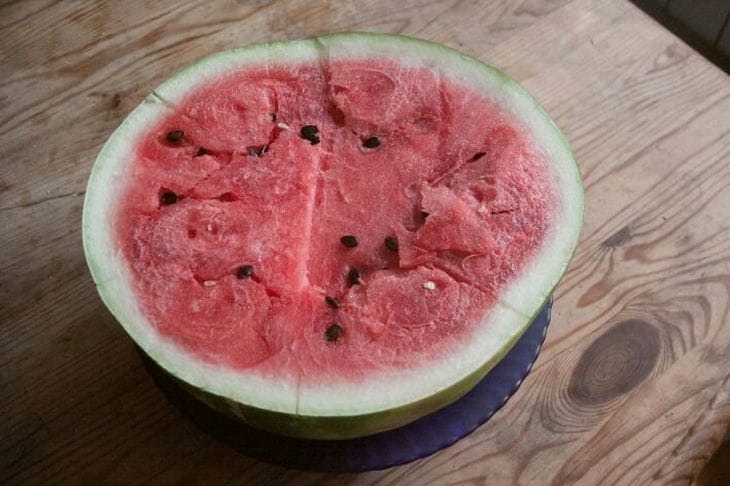At any time of the year, it is worth carefully approaching the choice of food products.
As for watermelons, they require special attention in the off-season, since during this period the risk of purchasing a watermelon oversaturated with nitrates increases significantly.
We invite you to familiarize yourself with the signs that indicate that a watermelon has not ripened on its own.

1. Watermelon with nitrates does not make a characteristic cracking sound when squeezed.
2. A good (i.e. ripe and tasty) watermelon should have a dry stalk and a clear yellow spot on the side, indicating that the fruit has been lying on the ground for a long time and ripening. If the watermelon is stuffed with nitrates, you will not find such a spot or it will be white.
3. The inside of a watermelon with nitrates is riddled with thick yellow veins, and the color of the pulp may be too bright or even have a purple tint.
4. The flesh of a good watermelon should be “sugary” when cut, while a watermelon with nitrates is smooth when cut.
5. If you doubt your purchase, try a small test by putting a piece of pulp in water. If the liquid turns bright pink, you have a watermelon with nitrates.
